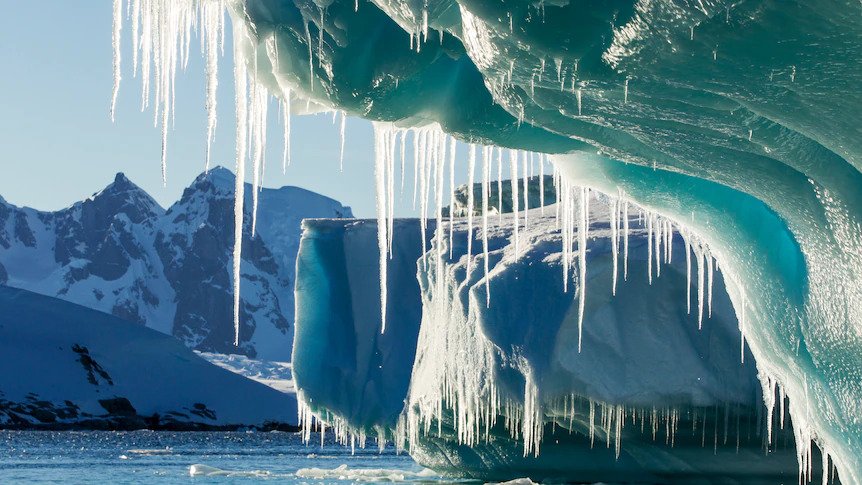Antarctic and Arctic heat records have been smashed. What’s going on?


Parts of eastern Antarctica were reportedly around 40 degrees Celsius above average, with Concordia weather station at 3,234 metres above sea level recording its highest ever temperature of -11.5 degrees Celsius, according to tweets from meteorologist Etienne Kapikian from France-Meteo.
The March temperature record at Antarctica’s Vostok station was broken by almost 15C and the Terra Nova Base on the Antarctic coast hit +7C, according to tweets by extreme weather tracker Maximiliano Herrera.
Meanwhile, at the other end of the planet, parts of the Arctic were reported to be experiencing extremes pushing 30C above the monthly average. Heat records were broken in Norway and extreme highs were recorded in Greenland.
Climate change forecasts all predict increased frequency and intensity of extreme weather events. So is this what we’re witnessing?
Atmospheric river flows into Antarctica
First of all, it’s unlikely that the simultaneous occurrence of these two events is related to the same weather pattern, according to Simon Alexander, an atmospheric scientist from the Australian Antarctic Program.
“It probably is [coincidental], but the scientists will have to carefully figure that out to confirm that it’s a coincidence,” Dr Alexander said.
In terms of the event in the southern hemisphere, a very large high-pressure system drove warm moist air from the Southern Ocean down across Antarctica.
“There was a massive high pressure system south-east of Australia over the Southern Ocean,” Dr Alexander said.
He said there was also a possibility that rain records may have been broken in Antarctica, where precipitation typically falls as snow, but it’s too early to say.
Antarctica occasionally experiences these type of events where unseasonal temperatures are recorded, but this was an especially extreme example.
“Periodically we get these atmospheric rivers, if you think of it like a stream of water in the sky coming from low latitudes,” Dr Alexander said.
“This one that we’re talking about now seems to be a really big event given the amount of moisture and the temperatures we’re seeing.”
Is climate change the cause?
What makes this event even more unusual is the timing. Antarctica’s days are rapidly growing shorter at this time of year and temperatures should be much colder.
At the same time, the Arctic should still be emerging from winter.
The fact that both are experiencing simultaneous heat events has been described as “unthinkable” and “stunning” by some scientists.
“They are opposite seasons. You don’t see the north and the south (poles) both melting at the same time,” National Snow and Ice Data Centre scientist Walt Meier told US media.
So can we attribute these events to climate change, La Niña, both or neither?
Climate forecasts predict a long-term trend of warming in Antarctica and the Arctic.
They also predict an increase in intensity and frequency of more extreme events — both hot and potentially cold.
According to the IPCC, extreme heat events have increased in the Arctic since 1979, and we’re likely to see ice-free summers once a decade on average in the Arctic at 2C of warming.
In the Antarctic Peninsula, a strong warming trend has been observed since the 1950s, and the IPCC forecasts the Antarctic Peninsula, West Antarctic and parts of the East Antarctic will continue to warm at above average rates throughout this century.
At sustained warming of between 2C and 3C the West Antarctic ice shelf is predicted to disappear completely over several millennia, releasing enough water to lift sea levels more than 3 metres.
But while this current extreme event is consistent with climate forecasts, and we’re likely to see more extreme events like this in Antarctica and the Arctic in the near future, it’s too early to scientifically conclude that the driver of this particular event is climate change.
Which is a very different thing to saying it’s not.
‘Attribution studies’ needed to confirm climate change influence
To find out whether climate change or weather patterns such as La Niña are contributing factors, scientists will need to conduct specific research, Dr Alexander said.
“To attribute this type of event to La Niña or climate change, scientists have to do what are called attribution studies,” he said.
In that way, they can try to tease out the likelihood of such an extreme event occurring in the absence of human-caused climate change.
But it’s likely to be many months or years until we see that peer-reviewed data.
In the meantime, Dr Alexander said if the weather returns to normal, it’s unlikely that this event alone will greatly disturb long-term melting trends.
Antarctica’s sea ice was at its lowest levels since 1979 in February this year.
Source: abc.net.au





